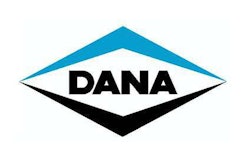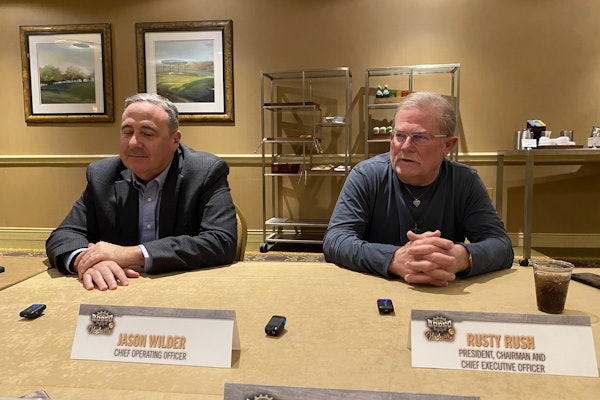By Bill Wade, Wade & Partners
Longtime BFF John Passante, a seasoned aftermarket veteran and leading traditional channel optimist, has sent me three panicked emails in the past two weeks. If I didn’t know him to be generally unflappable, the term ‘Henny Penny’ might be sharply descriptive. Especially troubling to him was the news that Monro had thrown in with the Amazon DeathStar.
He was right about one thing: the replacement tire business, mostly unchanged for 80 years, is unrecognizable after four months of turmoil. See how fast it can (and has) happened:
Goodyear Tire & Rubber and Bridgestone Americas announced in April they are forming one of the largest tire distribution joint ventures in the United States. TireHub LLC will provide U.S. tire dealers and retailers with a comprehensive range of passenger and light truck tires from two of the world’s leading tire companies, with an emphasis on satisfying rapidly growing demand for larger rim diameter premium tires.
TireHub will combine Goodyear’s company-owned wholesale distribution network with Bridgestone-owned Tire Wholesale Warehouse (TWW). The transaction will enable Bridgestone and Goodyear to grow their respective tire businesses and capture enhanced value for their brands.
Then, on May 9, the 800-lb. gorilla entered the industry, as com, Inc. teamed up with Sears Holdings Corp. to allow customers to buy replacement tires online and have them installed at the troubled department store.
The moves signal radical changes in the replacement-tire market. Manufacturers are taking control of their own distribution, cutting out wholesalers like American Tire Distributors (ATD) and, along with retailers, are developing their own internet capabilities to reach consumers directly.
Monro, Inc. announced it has collaborated with com to provide tire installation services at Monro’s retail tire and automotive service centers throughout the Eastern United States. Monro’s tire installation services are now available to customers who purchase tires from Amazon.com and select the Ship-to-Store option. Monro will receive the selected tires and complete the tire installation at the date, time, and location designated by the customer.
ATD begins laying off employees. ATD, owned by TPG Capital and Ares Management LP, has grown from a single tire store in 1935 to 140 distribution centers and 4,000 employees. It had $5.3 billion in revenue in 2017. Despite its size and scope, however, a recent CreditSights report questions whether the company can stay solvent.
Addressing employees after announcing cuts, CEO Stuart Schuette said, “We make the change. We are the innovators, the disrupters and the leaders. We have a plan that we are working through with our sponsors.”
“We own our destiny. We will move forward. And, we will stand with each other, shoulder to shoulder, as we create the ATD that will lead the industry into the future.”
I hope few of those reading this ever have to try to sell this message.
Distracting Stats v Strategic Profit Intent
In the tire business, change hit like lightning. How about the vehicle parts aftermarket…not historically known for quick change? There is no doubt that the shadow of Amazon left a trail of tears for those thinking their channel was somehow different, and that personal relationships would insulate them from the Internet Onslaught.
Amazon is secretive, well-imagined and run, sometimes, a bit deceptive. A real question for me is the external focus in the future for The DeathStar. It blinds us with the laser glow of amazing stats in daily press releases. Nobody has ever seen growth and customer loyalty like this!
My paranoid antennae make me wonder: Is this temporary blindness part of their plan. Why should they seek to spark early competitive responses, or government interruption?
Consider Amazon-Biz. The last official numbers we saw for sales, resellers, and buyers were at year-end 2016. Wouldn’t you brag on growing 20 percent per month?
Will strategic revenue streams (that look to me to be virtual sure things) from the following be enough to terminally disrupt traditional channels:
- Reseller sales and use of Fulfillment by Amazon;
- Business-to-business (B2B) advertising, including training videos (Pay to Play);
- Last-mile delivery platform fees (Shipping with Amazon’s new fleet of ‘last mile ‘owner operators);
- And finally, if startups and product bundlers don’t offer clones of top-profit SKUs, then Amazon will.
According to analysis by my partner Bruce Merrifield, who studies the ‘Amazon Effect’ in over 50 distributor channels, here are the steps required to make it work:
Step One: Achieve Winner-Take-All, Marketplace-Platform Value
In digital marketplaces, value exchange reaches a tipping point and then snowballs as
- More buyers attract more sellers which…
- Attract more buyers…
- Digital value grows exponentially…
- While operational costs drop.
When you get to a critical mass, competitors simply can’t follow. If you need some examples, just look at platform leaders Facebook, LinkedIn… and Amazon’s own business-to-customer (B2C) marketplace, starring 100,000,000 Prime buyers.
Amazon-Biz resellers are presently curating and dynamically pricing millions of B2B SKUs because Prime customers, who are mostly millennials, want their Amazon B2C shopping experience at work, too.
Step Two: Monetize Platform Activity and Clickstream Data
Imagine that by 2020 every B2B buyer uses Amazon-Biz for long-tail needs and price-checking on commodities in parallel with their primary vendor contracts. In addition, 5G bandwidth is available in some areas and rapidly rolling out to others to permit downloading of multimedia training courses and adjacent product line infomercials to all screens 24/7.
Marginal producers, import bundlers and startup clones are stealing share from top brands by being on Amazon with compelling content. So, top brands begrudgingly join the Amazon content management war… and they all pay to play. Won’t Amazon advertising fees soar while traditional channel publication and trade show fees plunge?
Amazon web services is inventing free, effective, cloud-based spend-management tools for big corporate buyers.
In addition, Amazon knows from customer clicks and ever-better algorithms which customers are most likely to want whatever new product a producer wants to take to market.
The pull marketing option for factories now emerges!
Factories can offer 10 to 90 second infomercials for a fee to the most likely end-customers with reward points for watching (an Amazon patent). If customers want more, factories can provide it 24/7.
Startups with micro-niche products or commodity clones won’t need established channels. Amazon markets and distributes for them in a week! Pull marketing is faster and costs less than push marketing programs through legacy channels.
If big brands will lose sales and channel advantages, why don’t they get started immediately to create their own vertical marketplace consortium to out-niche Amazon-Biz? Some of Amazon’s last-mile delivery experiments will get traction. Both delivery costs and hours-to-deliver will drop. And, Amazon will get a fee.
These scenarios require really no stretch nor imagination at all.
For more on the effects of AMZ and how to craft your proactive response, attend one of Bruce’s one-day seminar series starting this fall. See HERE.












